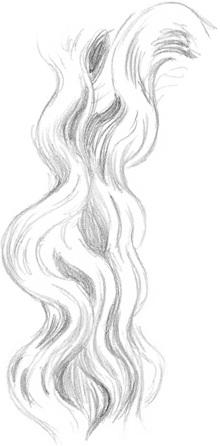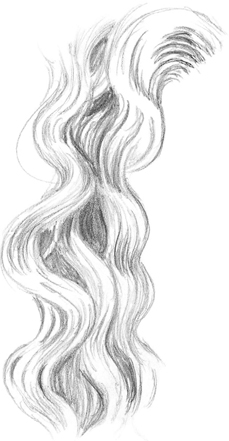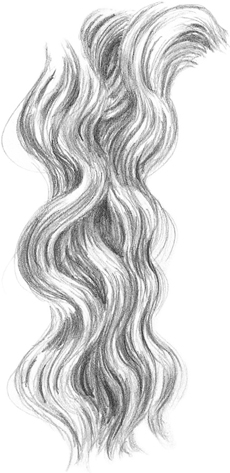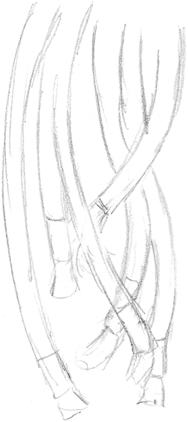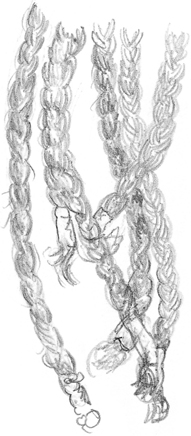Developing Hair
There are many different types and styles of hair—thick and thin; long and short; curly, straight, and wavy; and even braided! And because hair is often one of an individual’s most distinguishing features, knowing how to render different types and textures is essential. When drawing hair, don’t try to draw every strand; just create the overall impression and allow the viewer’s eye and imagination to fill in the rest.
STEP 1 I use an HB pencil to sketch the shape of the head and place the features. Then I use loose strokes to block in the general outline of the hair. Starting at the part on the left side of the head, I lightly draw the hair in the direction of growth on either side of the part. At this stage, I merely indicate the shape of the hair; I don’t worry about the individual ringlets yet.
STEP 2 Switching to a 2B pencil, I start refining the eyes, eyebrows, nose, and mouth. Then I define the neckline of her shirt with curved lines that follow the shape of her body. Returning to the hair, I lightly sketch in sections of ringlets, working from top to bottom. I start adding dark values underneath and behind certain sections of hair, creating contrast and depth. (See “Creating Ringlets” sidebar.)
STEP 3 I shade the face, neck, and chest using linear strokes that reach across the width of the body. Then I define the eyes, lips, and teeth, and I add her shoulder and the sleeve of her shirt. Next I continue working in darker values within the ringlets, leaving some areas of hair white to suggest blond highlights. Although the hair is much more detailed at this final stage, I am still simply indicating the general mass, allowing the viewer’s eye to complete the scene. Finally I draw some loose strands along the edges of the hair, leaving the lightest values at the top of the subject’s head.



